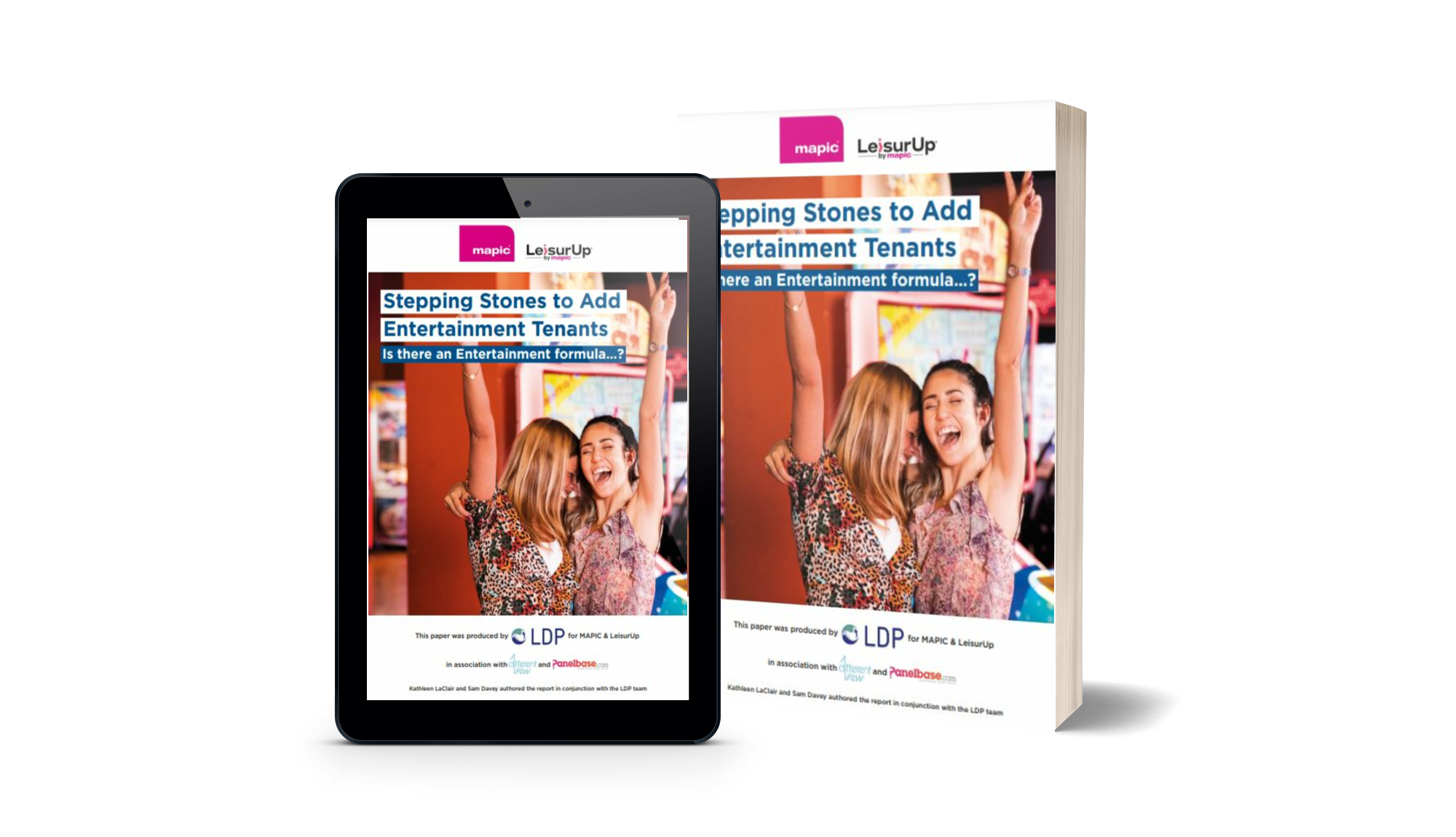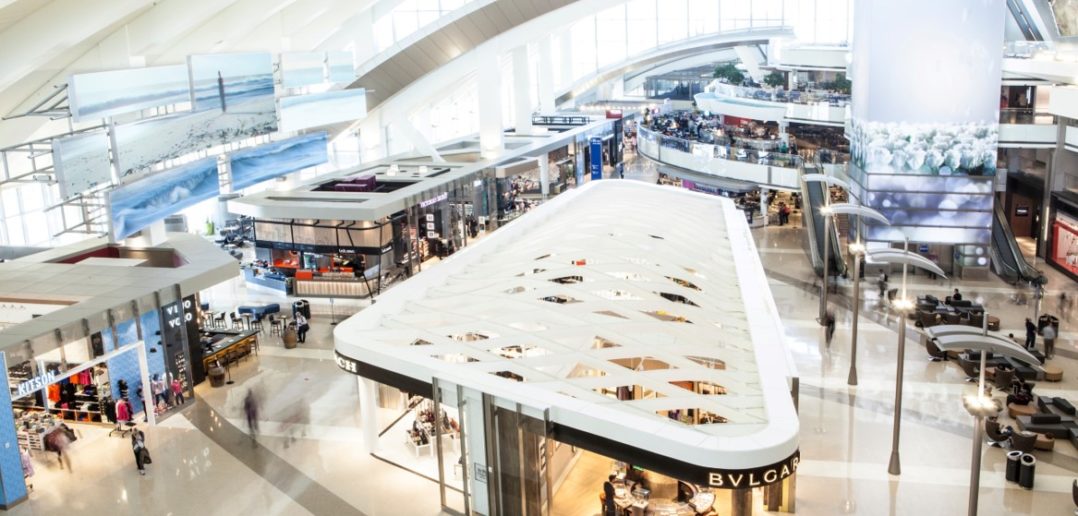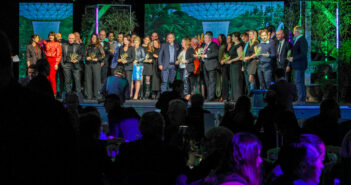Food and beverage with travel retail locations will be a key them of MAPIC FOOD in Milan next year. We talked to some of the key players to discuss where they see the opportunities for F&B in travel retail and why it is becoming increasingly important.
1. Melanie Guilldou, executive VP foodservice global, Lagardere Travel Retail

Q: How do you feel that F&B operators and retailers can best take advantage of travel retail locations to entice connected passengers and increase traffic?
MG: First of all, I would say that we have to distinguish stations from airports, and within stations metro from railway, and within airports regional versus international ones. The answers are different depending on the locations. In addition, we should also add a customer behaviour segmentation linked to the reasons for the trip, whether professional or leisure.
What is key is speed of service/speed of payment. Everything should be thought through keeping that in mind (customer path within the shops, simplified product ranges etc). Retailers could also use travel locations as interesting delivery spots for online orders, since travel locations can be on daily customers’ journeys for example.
Q: What is the best way in your view of making optimum use of transit zones as a crucial physical point of contact with customers? And how is this different than in a shopping centre/on a high street?
MG: It’s the same again – shopping centres and high street are not located on daily customers journeys when it comes to stations for example.
Q: We have seen the rise of F&B, services, leisure/entertainment, click & collect, etc within and around transport hubs. So why has it become important to create human experiences around passengers and what does it add to the customer journey?
MG: Experiences are key, as in any other retail places, but it can be human or not (design of the location/digital services). Competition is fiercer and fiercer too, and so experiences can make the difference. Travellers also love to experience different locations and services while travelling. It is interesting too from an economic standpoint, since very often their spending is higher.

Mixed use retail and leisure: What happens next? – White Paper
2. Vivian Braun, worldwide marketing leader, IBM

Q: How do you feel that F&B operators and retailers can best take advantage of travel retail locations to entice connected passengers and increase traffic?
VB: Customers have become accustomed to convenience and availability at a click. They don’t think about retail channels; they themselves are a ‘channel of one’, expecting the provision and goods and services to evolve around them and their needs. Therefore, when they are on the move, they are open towards – and expect – offerings that are relevant to them in these particular circumstances. If retailers can understand and anticipate the unique characteristics of the traffic by time and place and predict the pattern of demand based on the analysis of historical transactions against those variables, they can plan ahead to ensure availability of the products that those passengers are most likely to desire. That will drive revenue as well as customer satisfaction improvements.
Q: What is the best way in your view of making optimum use of transit zones as a crucial physical point of contact with customers? And how is this different than in a shopping centre/on a high street?
VB: Transit zones offer a great opportunity for a physical presence, providing that personal touch that e-commerce cannot. Customers still want the convenience of availability here and now, and to be able to engage with the brands. Whereas in shopping centres and high streets, the purpose of people visiting is (mainly) shopping, this isn’t the primary reason for being in a transit zone. Less time to browse, more limited range of needs, probably a stronger inclination towards impulse buying will affect the assortment as well as how it is being displayed in store, to provide optimum convenience (and cross-selling). Predicting the hyper-local demand down to the SKU level allows the retailers to tap into this opportunity.
Q: We have seen the rise of F&B, services, leisure/entertainment, click & collect, etc within and around transport hubs. So why has it become important to create human experiences around passengers and what does it add to the customer journey?
VB: A regular commute or an ad hoc business or leisure trip can be tiring and stressful, while seen as an unproductive waste of time. Being able to sweeten the journey with services, entertainment and offering convenience of shopping (and collecting) – another chore – can create a strong goodwill towards the brands that provide these sweeteners, and by association, the transport provider itself.
3. Aude Landy-Berkowitz, development and diversity director, Ceetrus

Q: How do you feel that F&B operators and retailers can best take advantage of travel retail locations to entice connected passengers and increase traffic?
AL-B: Transport hubs are the gateway for the majority of urban or suburban populations. Passengers – increasingly in a hurry and connected – need to save time and the installation of shops or services for everyday life, for example, allows all to save time, to connect the useful with the pleasant during these “passages obligés” in a society whose luxury becomes the gaining of time.
Q: What is the best way in your view of making optimum use of transit zones as a crucial physical point of contact with customers? And how is this different than in a shopping centre/on a high street?
AL-B: The approach is different in a transport hub: there is a regularity of passage and it is not a destination in itself. We must be able to capture the person and offer him or her on their way goods or activities that will help them on a daily basis in different ways: save time, entertain, equip, restore, etc. In a shopping centre that is a destination in itself, we go there to search for or buy something, so less regularly, less daily, but in a time dedicated to an activity such as shopping, lunch etc, so the expectations are therefore not quite the same.
Q: We have seen the rise of F&B, services, leisure/entertainment, click & collect, etc within and around transport hubs. So why has it become important to create human experiences around passengers and what does it add to the customer journey?
AL-B: In a hub, the notion of time and speed is the main concept to deal with. We must be able to consume quickly, find what we are looking for quickly…or wait in transits with this treatment of waiting. To propose to the passenger to have an activity during his or her transit and thus to take advantage of this time initially ‘lost’. This adds to the fact that the digital cannot offer for the moment, the experience and entertainment in reality and no longer alone in front of a screen.
4. Alessandro Zanotti, managing director and digital customer products lead, Accenture
 Q: How do you feel that F&B operators and retailers can best take advantage of travel retail locations to entice connected passengers and increase traffic?
Q: How do you feel that F&B operators and retailers can best take advantage of travel retail locations to entice connected passengers and increase traffic?
AZ: By driving awareness/consideration and not only purchase. An amazing targeted media for high spending business and holiday travellers means the need to strengthen geo-localised marketing campaigns to interact with possible targeted buyers “on the go”, also leveraging on data exchanges. The goal should be to populate data/CRM databases, not only to drive impulse sales. The next challenge: real estate fees (for example, at airports) linked to sales and not to the overall leads/traffic of the retailers, is to be re-invented to consider omni-channel/indirect sales leads.
Q: What is the best way in your view of making optimum use of transit zones as a crucial physical point of contact with customers? And how is this different than in a shopping centre/on a high street?
AZ: Beyond the business opportunity, the complication is that transit times are much shorter versus traditional shopping trips/shopping mall visits (for example, 30-60 minutes active stay at airports). The vision: further need for personalisation of the products/services offering (right thing for the right person) and for a contextual offer (relevant for the exact moment in time) on the mobile devices of the passengers. We have seen recently for example the pilots of food boxes pre-ordered on mobiles/kiosks and segmented (healthy, gourmet, etc) tailored at last minute airport/station travellers as a new source of revenue streams for F&B players.
Q: We have seen the rise of F&B, services, leisure/entertainment, click & collect, etc within and around transport hubs. So why has it become important to create human experiences around passengers and what does it add to the customer journey?
AZ: We call it “Retail with purpose”. There is a new wave of finding a new role for stores alongside omni-channel/e-commerce channels. Several players invested in technologies to innovate/automate the stores (see for example unmanned stores from key Asian retailers like 7-Eleven and Suning), but the research highlights that human centric/service oriented stores are the most appreciated, not the automated ones. In our view the challenges for future retail stores are different and can be summarised as: Smaller selling surfaces to leverage on omni-channel opportunity (shifting partially the stock/assortment online); Designed around “human needs”, not to expose retailers full assortments; Leverage AI/technology to drive the next wave of personalisation and impulse sales; and Involve customers/humans in the store experience design phase.

Stepping Stones to Add Entertainment Tenants
5. Andrea Aiello, director, Retail & Food
 Q: How do you feel that F&B operators and retailers can best take advantage of travel retail locations to entice connected passengers and increase traffic?
Q: How do you feel that F&B operators and retailers can best take advantage of travel retail locations to entice connected passengers and increase traffic?
AA: I think that retailers must develop more products and services dedicated to the travel retail channel. And do not simply offer the same products as other stores. We need more attention to seasonality and to the different types of passengers passing through their shops. This is why it is very important that airport management companies share data on their passengers.
Q: What is the best way in your view of making optimum use of transit zones as a crucial physical point of contact with customers? And how is this different than in a shopping centre/on a high street?
AA: The transit zones have a monstrous number of passengers, or…potential customers. This in itself is a favorable element, contrary to what happens in some shopping centers where a ‘hemorrhage’ of customers is measured. The airports can count on a ‘forced stay’ of the passengers inside the terminal, past the security checks. So retailers should work to make their stores strongly attractive. As for the stations here, however, it may be rewarding a logic of products smaller, faster, easy to take away and to be purchased in a few minutes, between a train and another.
Q: We have seen the rise of F&B, services, leisure/entertainment, click & collect, etc within and around transport hubs. So why has it become important to create human experiences around passengers and what does it add to the customer journey?
AA: Human relationships and customer service often make the difference. Increasingly in the relationship with the customer in the travel retail sector. If the customer chooses to buy only on the price variable, then they will find satisfaction in the e-commerce. But if you’re looking for something special, professional advice, a unique collection, then customer care becomes really important. Even for a lot of passengers with little free-time that use dwell time in transit zones to have their shopping time: they might have good spending capacity and little time.
Discover the “Travel retail” session at Mapic Food 2019 !


![[NEW] MAPIC interview: In conversation with Giovanni Porcu, CEO and founder of Doppio Malto](https://www.beyondretailindustry.com/wp-content/uploads/2024/03/DM-Magenta_1-351x185.jpeg)

